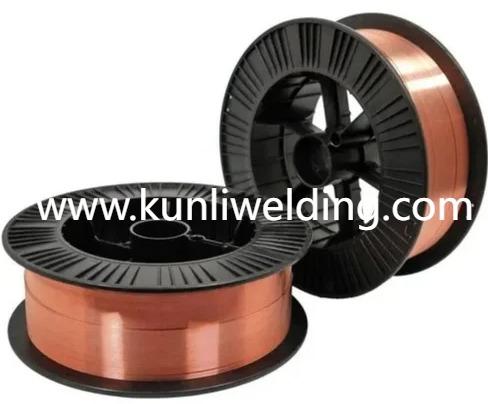Are Kunliwelding Production Methods Matching Global Fabrication Supply Demands

As industries renew focus on lighter structures and resilient supply chains, a growing number of China based producers are shaping global supply options for fabricators. Aluminum Mig Wire Manufacturers from that region are positioning themselves to meet demand from sectors like aviation and automotive by combining material know how with scalable production practices. This shift matters for buyers who must balance performance with reliable delivery as global programs evolve.
Manufacturers that target aerospace and automotive segments often highlight a few capabilities that matter in critical assemblies. A stable alloy chemistry that yields predictable fusion behavior and corrosion resistant deposits is one cornerstone. The ER5183 type filler metal is an example of a magnesium bearing wire designed with those attributes in mind and promoted for use where strength and resistance to marine style exposure are priorities. Claims about arc stability and weldability for common joining methods reflect a focus on consistent output for both manual and automated cells.
Production practices are part of the story as well. Firms that emphasize quality control maintain tightly monitored processes for alloy mixing, wire drawing and spooling so that feed behavior and dimensional uniformity remain reliable in workshops and on automated equipment. When suppliers publish details about material form options and packaging that suit robotic feeders or manual stations, fabricators can plan procurement with less guesswork about compatibility. Those logistical details help shops reduce downtime during changeovers and support longer production runs.
Sustainability and lifecycle thinking have become prominent themes across industries. For aviation and automotive programs that target lighter assemblies to improve efficiency, filler choices that preserve structural integrity while reducing mass are attractive. Manufacturers that frame their wire offerings as part of an overall material strategy are aligning with these broader procurement priorities. This alignment also influences maintenance planning since corrosion resistant deposits can extend the intervals between interventions for in service hardware.
Technical support and documentation are another differentiator. Suppliers serving sensitive sectors typically provide technical notes on recommended welding approaches and on handling to avoid common issues such as pores or inconsistent penetration. Guidance on shielding practices and on matching wire form to process helps operators translate a material specification into repeatable welds on assemblies that must meet appearance and structural requirements. Clear product information about alloy composition and recommended processes reduces the time engineers spend qualifying a material for use.
Global buyers also weigh certifications and traceability. Companies that operate in regulated markets often seek suppliers who can demonstrate consistent batch to batch testing and who can provide traceable documentation that aligns with procurement controls. While the specifics vary by program, the presence of documented quality systems and accessible technical staff contributes to smoother onboarding into production. This practical support helps teams adopt new materials without overburdening engineering schedules or assembly lines.
Innovation in joining technologies interacts with material supply. As manufacturing moves toward more automated joining and tighter tolerances, wire that feeds predictably and produces consistent bead shape becomes part of the automation equation. Suppliers that list a variety of wire diameters and packaging options give integrators the choices they need to match feeders and parameters. That compatibility supports the move toward higher throughput while keeping rework and finishing effort manageable on complex assemblies.
For procurement teams considering new supplier partnerships, a pragmatic approach helps. Request samples in the intended wire form, ask about handling and storage recommendations, and confirm the supplier provides accessible technical guidance for process tuning. These steps reduce risk when introducing a new alloy into assemblies that carry safety or long term performance expectations. Strong supplier communication and consistent product documentation make scaling from prototype to ongoing production more efficient.
If you want to review a range of aluminum alloy wire options produced with attention to process compatibility and service performance the catalog page at the manufacturer site is a useful starting point. The product collection includes wire forms and technical notes that align with industrial joining needs across sectors. Review the available options at https://www.kunliwelding.com/product/aluminum-alloy-wire/aluminum-alloy-welding-wire.html and consider how material choice interacts with your production methods and lifecycle goals.
- Art
- Causes
- Crafts
- Dance
- Drinks
- Film
- Fitness
- Food
- Oyunlar
- Gardening
- Health
- Home
- Literature
- Music
- Networking
- Other
- Party
- Religion
- Shopping
- Sports
- Theater
- Wellness

